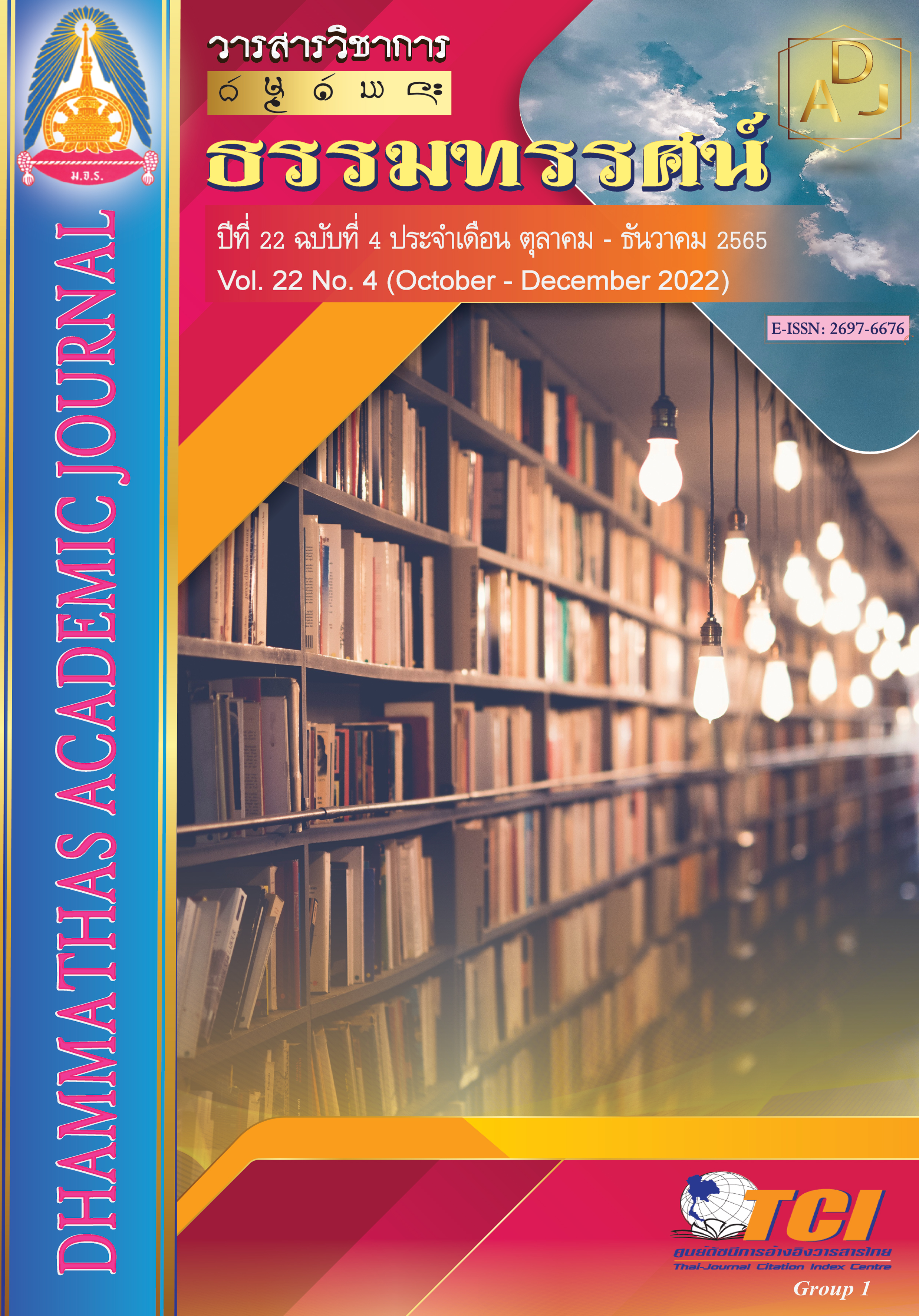The Model of Administration for Excellence of Buddhist administration towards excellence of the Sangha Colleges under Mahachulalongkornrajavidyalaya University
Main Article Content
Abstract
The objectives of this research were: 1) to study the components and indicators of Buddhist administration towards excellence; 2) to examine the congruence of the Buddhist administration equation model towards excellence; 3) to develop a model of Buddhist administration towards excellence; 4) to assess a model of Buddhist administration towards excellence of Sangha Collages under Mahachulalongkornrajavidyalaya University. This study was carried out by means of mixed research method. The study was divided into 4 phases as follows:
The research results were as follows:
1. The components and indicators of Buddhist administration towards excellence of Mahachulalongkornrajavidyalaya University: the results of the study revealed that there were 7 main components: (1) organizational leadership, (2) strategies, (3) service recipients, (4) measurement, analysis and knowledge management, (5) personnel, (6) operations, and (7) outcomes, and also there were 21 sub-components with 110 indicators.
2. The results of the examination of the congruence of the Buddhist administration equation model towards excellence consistent with empirical data and meet the specified criteria were as follows: statistical value qui-square (χ2) = 1781.370, degree of freedom (Df) = 323, statistical significance (P-Value) = 0.0000. This indicated that qui-square does not have statistical significance. Root Mean Square Error of Approximation (RMSEA) = 0.000, Standard Root Mean Square Residual (SRMR) = 0.088, Comparative Fit Index (CFI) = 0.927, Tucker-Lewis Index (TLI) = 0.902.
3. The result of the development of a Buddhist administration model towards excellence revealed that the model consisted of (1) conceptual principles; (2) model objectives, (3) content/methods; (4) expected outcomes and (5) conditions for success.
4. The results of the evaluation of the Buddhist administration model for excellence showed the model’s suitability, feasibility and usefulness at a high level.
Article Details

This work is licensed under a Creative Commons Attribution-NonCommercial-NoDerivatives 4.0 International License.
เพื่อให้เป็นไปตามกฎหมายลิขสิทธิ์ ผู้นิพนธ์ทุกท่านต้องลงลายมือชื่อในแบบฟอร์มใบมอบลิขสิทธิ์บทความ ให้แก่วารสารฯ พร้อมกับบทความต้นฉบับที่ได้แก้ไขครั้งสุดท้าย นอกจากนี้ ผู้นิพนธ์ทุกท่านต้องยืนยันว่าบทความ ต้นฉบับที่ส่งมาตีพิมพ์นั้น ได้ส่งมาตีพิมพ์เฉพาะในวารสาร วิชาการธรรม ทรรศน์ เพียงแห่งเดียวเท่านั้น หากมีการใช้ ภาพหรือตารางของผู้นิพนธ์อื่นที่ปรากฏในสิ่งตีพิมพ์อื่นมาแล้ว ผู้นิพนธ์ต้องขออนุญาตเจ้าของลิขสิทธิ์ก่อน พร้อมทั้ง แสดงหนังสือที่ได้รับการยินยอมต่อบรรณาธิการ ก่อนที่บทความจะได้รับการตีพิมพ์References
กาญจนา คุณารักษ์. (2543). พื้นฐานการพัฒนาหลักสูตร. นครปฐม: มหาวิทยาลัยศิลปากร วิทยาเขตพระราชวังสนามจันทร.
ไพฑูรย์ สินลารัตน์. (2552). กรอบมาตรฐานคุณวุฒิระดับอุดมศึกษาแห่งชาติ พ.ศ. 2552 (Thai Qualifications Framework for Higher Education: TQF). การประชุมวิชาการกองบริการการศึกษา, 23 พฤศจิกายน 2552. กรุงเทพฯ: มหาวิทยาลัยรามคำแหง.
ยุทธ ไกยวรรณ์. (2556). การวิเคราะห์สถิติหลายตัวแปรสำหรับงานวิจัย. กรุงเทพฯ: จุฬาลงกรณ์มหาวิทยาลัย.

